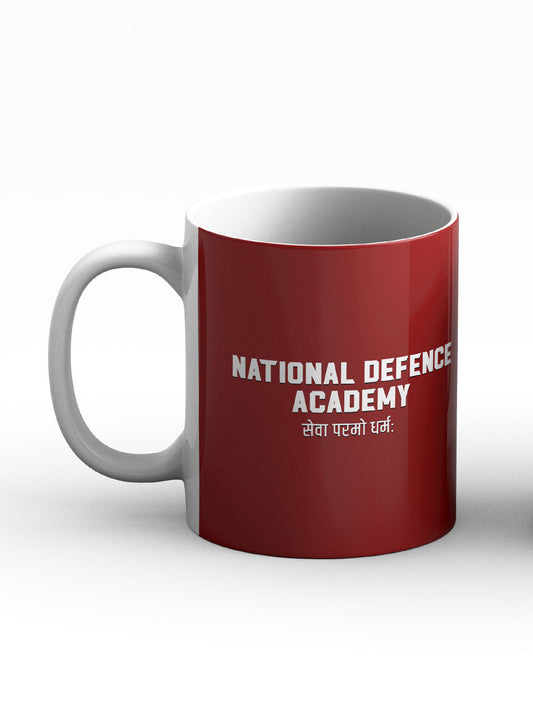How to Score High in NDA Mathematics: Tips & Shortcuts

Mastering Mathematics for the NDA Examination
In preparing for the National Defence Academy (NDA) examination, Mathematics often poses a substantial challenge for aspirants. With a syllabus that covers topics ranging from algebra and trigonometry to calculus and geometry, candidates must not only grasp complex concepts but also solve problems efficiently under time constraints. It is essential to develop effective strategies and shortcuts that can enhance performance in this critical subject area.
Mastering Mathematics for the NDA exam is not just about rote memorization; it's about understanding key principles, familiarization with problem types, and mastering techniques for quick problem-solving. Whether you’re a beginner seeking to understand the basics or a former student looking to brush up on skills, this guide aims to provide you with robust strategies that can lead to high scores in the NDA Mathematics paper.
Historical Context
The NDA Mathematics paper has evolved over the years, reflecting broader educational trends and the growing importance of mathematical proficiency in Defence services. Initially, the focus was primarily on arithmetic and basic geometry. However, as the complexity of operations and technology in the military evolved, so too did the mathematical requirements. Today, the exam includes advanced topics, such as differential calculus and coordinate geometry, which are essential in fields like cryptography and operations research within a Defence context.
Key Aspects of Scoring High in NDA Mathematics
Understanding the NDA Mathematics Syllabus
The first step to excelling in NDA Mathematics is to have a comprehensive understanding of the syllabus. The NDA exam covers various mathematical subjects, including:
- Algebra: Equations, inequalities, permutations, and combinations.
- Trigonometry: Trigonometric ratios, identities, and equations.
- Geometry: Properties of shapes, coordinate geometry, and theorems.
- Calculus: Limit, continuity, differentiation, and integration.
- Statistics and Probability: Basic concepts and applications.
- Vectors and Matrices: Operations and applications.
Familiarity with the syllabus can help candidates allocate study time effectively based on the weight of each topic.
Effective Study Techniques
-
Conceptual Understanding:
- Focus on understanding the concepts rather than just memorizing formulas.
- Utilize visual aids, such as graphs and diagrams, to grasp complex topics easily.
-
Regular Practice:
- Practice is crucial in Mathematics. Allocate specific time daily for solving different types of problems.
- Use books and resources like SSBCrack’s Mathematics material to expose yourself to varied question types.
-
Shortcut Techniques:
- Memorable shortcuts can drastically reduce problem-solving time. For example, for multiplying two numbers close to 100, use the formula: (100 - a)(100 - b) = 10000 - (a + b) * 100 + ab.
-
Mock Tests:
- Taking timed mock tests will not only help measure progress but also improve speed and accuracy.
- Analyze test results to identify weak areas for further focus.
-
Group Studies:
- Engaging in group study sessions can enhance learning as explaining concepts to others solidifies your own understanding.
- Discuss various problem-solving methods to gain new perspectives.
Time Management During Exam
Time management can make or break your performance on exam day. Here are methods to manage your time effectively:
- Divide Your Time: Allocate specific time blocks to different sections of the paper.
- First Attempt Easier Questions: Skim through the exam and tackle questions you are confident about first. This boosts your confidence and secures quick marks.
- Practice Speed: During your preparation, practice responding to questions within strict time limits, which can help improve your speed.
Case Studies and Real-world Applications
To emphasize the significance of Mathematics in Defence, consider the principle of trajectory calculation, which is essential for artillery and aerial operations.
Example: In 2018, during a military operation in mountainous regions, artillery units had to calculate projectile trajectories effectively. Skilled mathematicians and engineers played a crucial role in determining angles and distances to optimize strike efficiency, showcasing real-world applications of mathematical principles learned in NDA.
Statistical Data and Research Insights
Various studies indicate that mathematical proficiency is a predictor of success in engineering and technical fields within Defence. For example:
- A 2021 study by the Defence Research and Development Organisation (DRDO) found that candidates with a strong background in mathematics scored 15-20% higher in technical assessments compared to their peers.
- Furthermore, the correlation between math scores and candidates' performance in critical thinking roles underscores the importance of a robust mathematical foundation among Defence personnel.
Comparative Analysis
When preparing for NDA Mathematics, students often have different approaches, such as:
- Traditional Learning: Focusing on textbooks and theory-first and later applying concepts through practice.
- Problem-Solving Approach: Prioritizing extensive problem practice right from the beginning, minimizing time spent on theory.
Research shows that while both methods are effective, a blended approach, where candidates first grasp essential concepts and then immediately apply them through problem-solving, tends to yield better long-term retention and higher scores.
Challenges and Solutions
Challenge 1: Complex Problem Types
Many candidates struggle with advanced topics, such as calculus and trigonometry.
Solution
- Break complex problems into smaller parts. For instance, in calculus, practice derivatives and integrals separately before working on applications.
Challenge 2: Anxiety During Exam
Test anxiety is common and can impair performance.
Solution
- Employ relaxation techniques, such as deep breathing exercises. Visualizing success and thorough preparation can also foster a calmer mindset.
Future Trends and Predictions
As educational methodologies evolve, so too will the teaching and testing of Mathematics in Defence-related examinations. Future trends may include:
- Digital Learning Tools: The implementation of e-learning platforms, such as the online courses and study materials available from SSBCrack, is becoming increasingly important. These platforms offer interactive resources and personalized study plans, allowing candidates to learn at their own pace.
- AI-Powered Study Assistance: Artificial intelligence could assist students by analyzing their weaknesses and providing tailored problem sets, revolutionizing the way students prepare for Mathematics in the NDA exam.
Conclusion
Scoring high in NDA Mathematics requires a multifaceted approach rooted in understanding concepts, consistent practice, and strategic test-taking. By leveraging effective study techniques, embracing mock exams, and developing time management skills, candidates can enhance their performance.
Investing time in mathematics preparation not only positions candidates for success in the NDA examination but also equips them with essential skills for their future roles in the Defence services. With the right resources, such as those offered by SSBCrack, aspirants can feel confident in their mathematical abilities and effectively tackle the challenges posed by the NDA exam.
In summary, the journey towards mastering Mathematics for the NDA examination is demanding yet rewarding. The strategies discussed herein serve as keys to unlocking success, empowering candidates to approach the exam with readiness and confidence. Start your preparation today and take the first step towards achieving your NDA dream!



















